Independent device of the heat pump Frenett (friction heater)
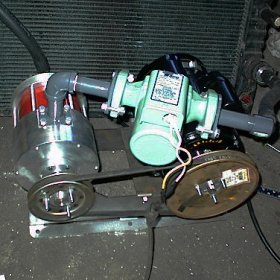
Wanting to reduce the cost of heating their homes, many homeowners managed to make a Frenett heat pump with their own hands. Some enthusiasts, as well as optimistic creators of commercials, assure that with the help of an improved model of this unit, it is possible to achieve an efficiency of 700, or even 1000%. Skeptics recall the basic principles of the laws of thermodynamics and doubt. Nevertheless, Frenett’s invention, patented almost four decades ago and repeatedly remade, successfully functions both as home-made devices and as solid industrial models.
Content
The principle of operation and device design
Any student knows well that intense friction leads to heating of surfaces or media. Eugene Frenett created a surprisingly simple heating device that uses this physical phenomenon. The inventor used two cylinders of different sizes. A smaller cylinder was placed in a hollow cylinder with a larger diameter. Between the outer surface of the first and the inner wall of the second cylinder, oil was poured. The small cylinder on one side was connected to an electric motor, and on the other hand a fan impeller was attached to it.

This is a heat pump circuit that was patented by Eugene Frenett back in 1977. Later, the model was repeatedly reworked and improved.
With the intensive rotation of the inner cylinder, the oil poured into the device was heated to sufficiently high temperatures. The impeller of the fan allowed to quickly distribute heat in the space of the room. For ease of use, the working cylinders were placed in a housing with openings for air. It was possible to optimize the operation of the device using a thermostat.
Despite the similar name, the Frenett device and its analogues have nothing to do with the heat pump, in which, based on the inverse Carnot principle, the low-potential energy of the environment (water, earth, air) is converted into heat energy with a high potential. They are united only by the fact that both systems are successfully used for heating homes.
Variations on the Fresnett Theme
Both the inventor and his followers over the years have repeatedly improved the fresnett heat pump. An interesting model in which the drum is placed horizontally, and in the center of the system is a shaft, part of which is located outside. This design must be done very carefully to prevent leakage of fluid at the junction of the housing with the shaft.

In this model of a Frenett heat pump, the moving shaft is pulled out and the axis of rotation is moved from a vertical position to a horizontal
In this case, there is no fan, and the coolant from the heat pump enters the heat exchanger, the role of which can be played by a conventional heating radiator or even a central heating system at home.

In this model of the Frenett pump, two drums are used simultaneously, and the coolant moves in a closed system through a heat exchanger or radiator
Later, a Frenett heat pump project was developed, in which two drums were used to heat the coolant. The system was supplemented by an impeller. Under the influence of centrifugal forces, the heated oil was ejected from the openings of this impeller. As a result, the liquid fell into a small gap between the rotor and the housing of the device, which made it possible to use such a pump with very high efficiency.

The use of a high-strength impeller in a Frenett heat pump improves the performance of the device. The coolant exits through narrow openings located at the edges
The most original version can be considered the version of the Khabarovsk scientists Nazyrova Natalya Ivanovna, Syarg Alexander Vasilievich and Leonov Mikhail Pavlovich. The working part of this device looks like a mushroom. As the working fluid, water is used, which reaches a boil and turns into very hot steam. Under the action of the reactive force of the steam, water moves through the channels of the device at a speed of 135 m / min, which allows you to do without an external power source.
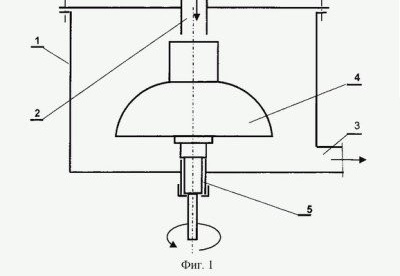
An approximate scheme of a universal generating unit developed in Khabarovsk: 1 - capacity; 2 - inlet pipe; 3 - outlet pipe; 4 - water heater; 5 - bearing shaft
Note! Do not try to repeat the experience of scientists from Khabarovsk and create such a universal generator for home use. This design has been designed exclusively for industrial use.
Having understood the principles of the device of the Frenett pump, any inventor can make his own adjustments to his design in order to improve the operation of the device or simplify its installation.
How to make such a device yourself?
The most practical for heating homes is the model of the Frenett heat pump, in which there is no fan and inner cylinder. Instead, many metal discs are used that rotate inside the instrument. The role of the coolant is played by the oil, which enters the radiator, is cooled and then returned to the system. The operation of such a device is convincingly demonstrated in the video material:
For those who know English, this video may come in handy:
To make a heat pump according to the principle of Eugene Frenett at home is not difficult. To do this, you will need:
- metal cylinder;
- steel wheels;
- nuts
- steel rod;
- small electric motor;
- pipes;
- radiator.
The diameter of the steel disks should be slightly smaller than the diameter of the cylinder so that there is a small gap between the walls of the housing and the rotating part. The number of discs and nuts depends on the size of the structure. Disks are sequentially strung on a steel rod, separated by nuts. Commonly used nuts are 6 mm high. The cylinder should be filled with disks to the top. An external thread is applied to the steel rod along its entire length. Two openings for the coolant are made in the housing. Through the upper hole, the heated oil will enter the radiator, and from below it will return to the system for further heating.
As coolant device developers recommend using liquid oil rather than water, since the boiling point of such an oil is several times higher. With rapid heating, water can turn into steam and overpressure will occur in the system, which can damage the structure.

This is an approximate design of the Frenett heat pump, which is not difficult to implement with the help of improvised tools and available materials.
For mounting a threaded rod, a bearing is also required. As for the electric motor, any model that provides a sufficient number of revolutions, for example, a working motor from an old fan, is suitable.
The assembly process of the device is as follows:
- Two openings for heating pipes are made in the housing.
- A threaded rod is installed in the center of the body.
- A nut is screwed onto the thread, a disk is placed, the next nut is screwed, etc.
- Mounting continues until the disks are full.
- Liquid oil, such as cottonseed oil, is poured into the system.
- The housing is closed and the rod is fixed.
- The pipes of the radiator are brought to the holes.
- An electric motor is attached to the central shaft, which provides rotation.
- Connect the device to the network and check its operation.
To improve the operation of this type of heat pump and make its use more convenient and economical, it is recommended to use an automatic on-off system for the engine. Such a system is controlled using a temperature sensor, which is mounted directly on the device.
Where can such a pump be used?
The easiest way to use this device is to turn it into a room heater. Such a heat pump is perfect for heating a garage, bathhouse or other small room. But in the big house, craftsmen propose using the Frenett pump in combination with the "warm floor" system.
In this case, the coolant will circulate not through the radiator, but through plastic pipes laid in the floor screed. It is supposed to regulate the operation of this system using a temperature sensor, which is installed on the pump casing, and not mounted in a screed, as is done during the installation of a traditional water heated floor.
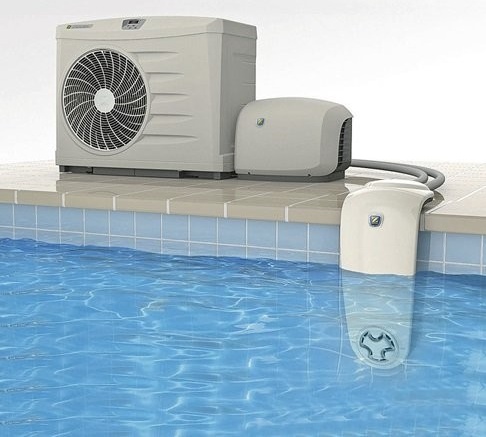
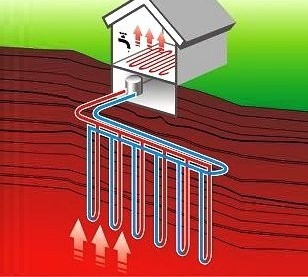
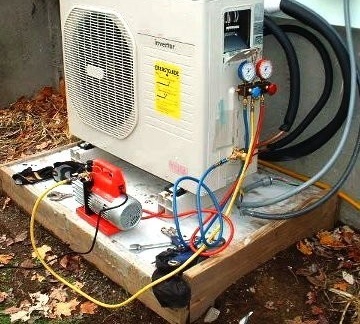
2 comments